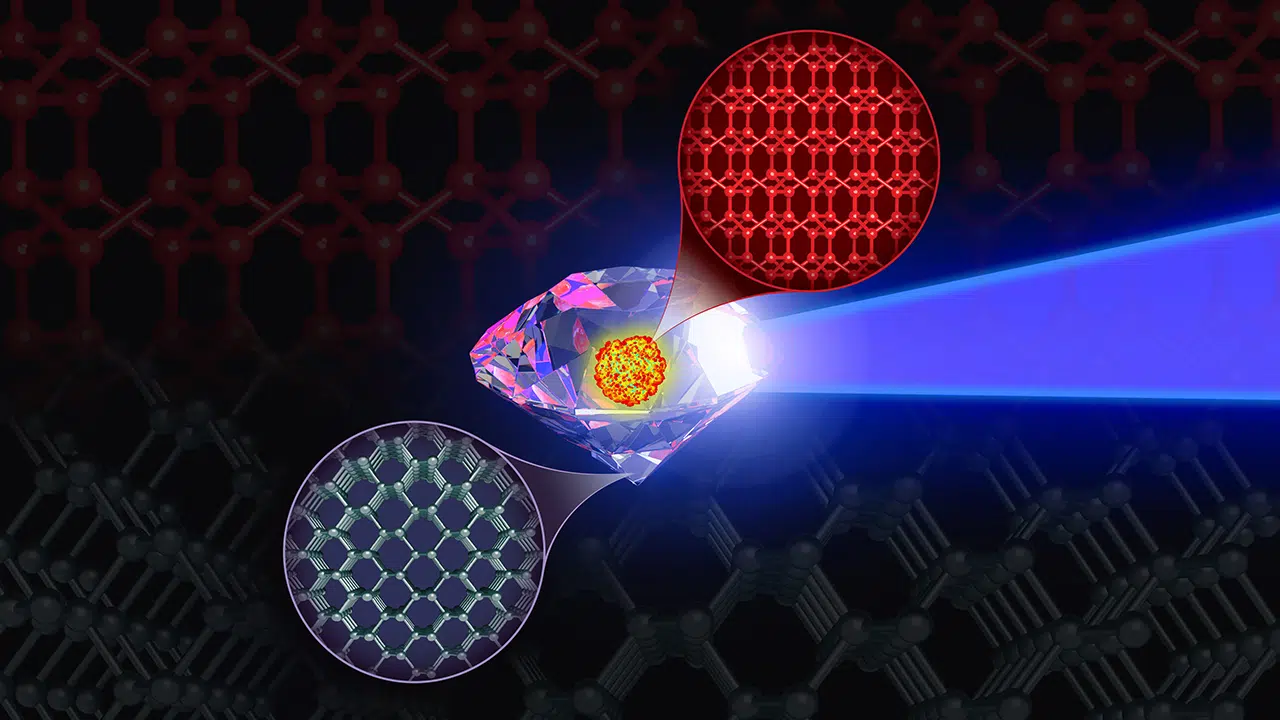
Experts believe that diamonds, renowned for their hardness, could potentially be compressed to create an even harder substance.
These expensive stones, formed from carbon crystals, occur naturally within the Earth’s depths. Research even suggests that geological events might propel diamond fountains to the surface.
Generally known for their toughness due to a rugged particle structure known as a tetrahedral lattice, scientists have uncovered methods to enhance their durability further.
Rare carbon molecule is the new hardest stable material
Researchers have conducted simulations on a rare carbon molecule that surpasses diamonds in hardness, potentially leading to its synthesis in laboratory settings.
This molecule, referred to as the eight-atom body-centered cubic (BC8) phase, is projected to be up to 30 percent more resistant to compression than diamond, the hardest stable material on our planet, as reported by ScienceAlert.
Physicists from the United States and Sweden conducted precise quantum-based molecular dynamics simulations using a supercomputer. Their aim was to observe how diamond responded to intense pressure and elevated temperatures, conditions that typically destabilize it.
These simulations unveiled fresh insights into the circumstances necessary to prompt the transformation of carbon atoms in diamond into the distinctive BC8 structure.
Previously, the BC8 phase had been observed on Earth in silicon and germanium. By extrapolating the characteristics of BC8 observed in these materials, scientists could predict how this phase would manifest in carbon, according to ScienceAlert.
Carbon’s BC8 phase doesn’t naturally exist on Earth
The BC8 phase of carbon isn’t found on Earth, but it’s believed to exist in the extreme high-pressure environments deep within exoplanets.
Theoretical models suggest that it’s the toughest form of carbon capable of remaining stable under pressures exceeding 10 million times that of Earth’s atmosphere. If scientists could create and stabilize it here, it could unlock remarkable opportunities for research and practical applications.
Diamond’s exceptional hardness stems from its atomic structure. Its atoms are arranged in a tetrahedral lattice, meaning each carbon atom is bonded to four neighboring atoms in a tetrahedral shape.
This arrangement matches the optimal configuration of carbon’s outermost electrons, contributing to the diamond’s renowned toughness, as reported by ScienceAlert.
“The BC8 structure maintains this perfect tetrahedral nearest-neighbor shape, but without the cleavage planes found in the diamond structure,” says physicist Jon Eggert of the Lawrence Livermore National Laboratory. “The BC8 phase of carbon at ambient conditions would likely be much tougher than diamond.”
Despite the potential stability of BC8 carbon under regular conditions, efforts to create it in a lab have been unsuccessful so far. Physicist Kien Nguyen Cong from the University of South Florida led a team of researchers in utilizing supercomputing capabilities to investigate the reasons behind these unsuccessful attempts.
See all the latest news from Greece and the world at Greekreporter.com. Contact our newsroom to report an update or send your story, photos and videos. Follow GR on Google News and subscribe here to our daily email!



